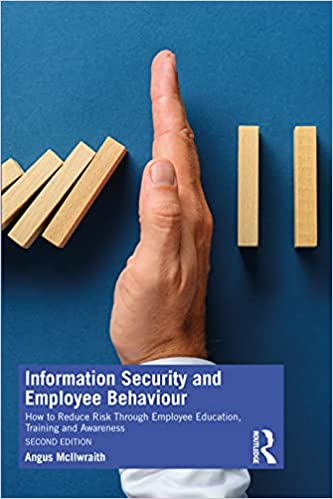Information Security and Employee Behaviour; How to Reduce Risk Through Employee Education, Training and Awareness
by Angus McIlwraith
English | 2021 | ISBN: 103205591X | 209 pages | True PDF | 8.56 MB
by Angus McIlwraith
English | 2021 | ISBN: 103205591X | 209 pages | True PDF | 8.56 MB
Research conducted over many years suggests that between 60 and 85 per cent of all information security incidents are the result of a lack of knowledge and/or understanding amongst an organisation's own people. And yet the great majority of money spent protecting systems is focused on creating technical defences against often exaggerated external threats. Angus McIlwraith's book explains how corporate culture affects perceptions of risk and information security, and how this in turn affects employee behaviour. He then provides a pragmatic approach for educating and training employees in information security and explains how different metrics can be used to assess awareness and behaviour. Information security awareness will always be an ongoing struggle against complacency, problems associated with new systems and technology, and the challenge of other more glamorous and often short-term priorities. Information Security and Employee Behaviour will help you develop the capability and culture that will enable your organisation to avoid or reduce the impact of unwanted security breaches.
This second edition has been thoroughly updated throughout, incorporating other areas like anthropology and other non-technical disciplines which are making an impact on recent developments. It also explores the technology used to deliver communication, education and awareness, particularly in the areas of online delivery and recent developments such as ‘gamification’, as well as the ways in which the research, tools, techniques and methodologies relating to the measurement and change of organisational culture have matured.



